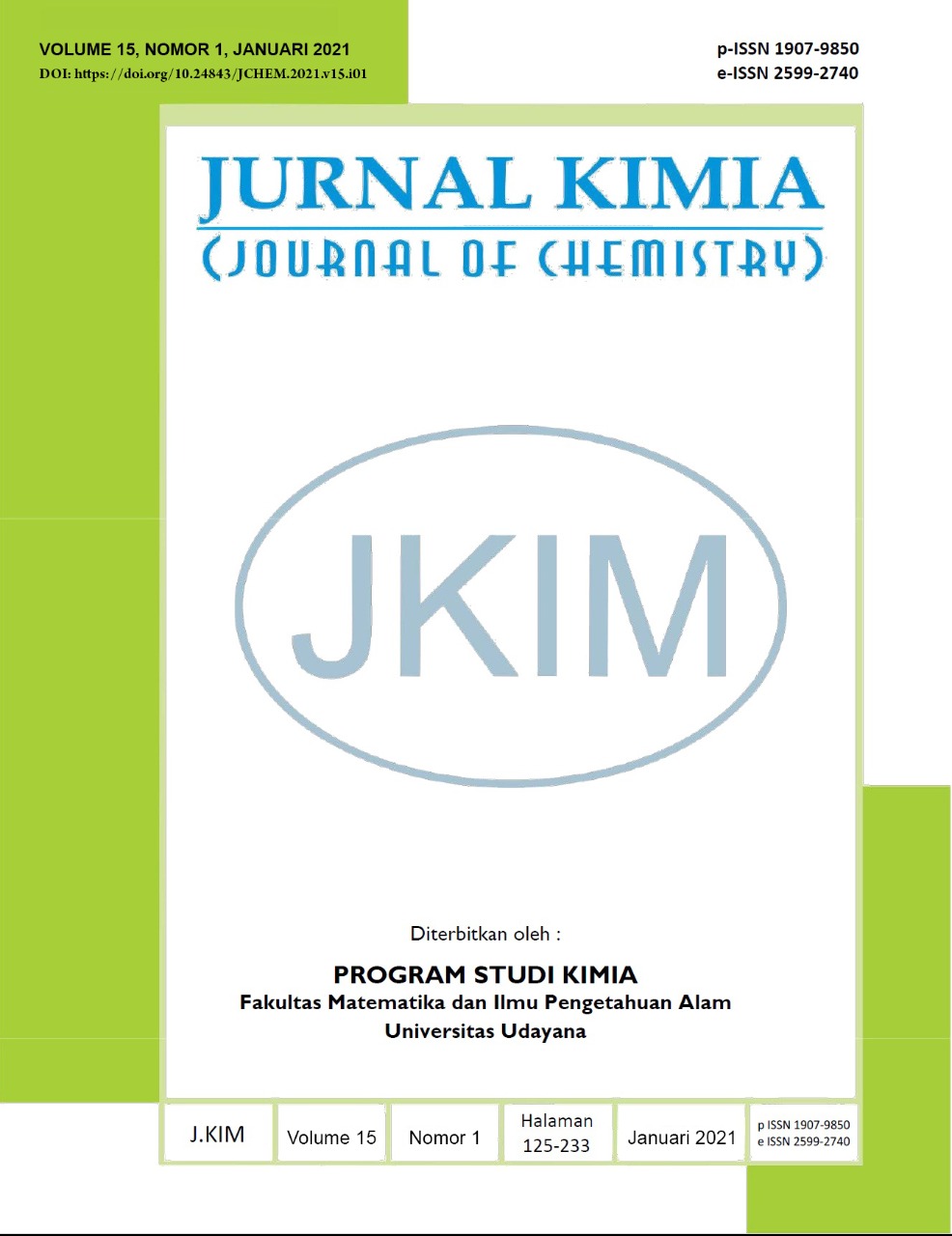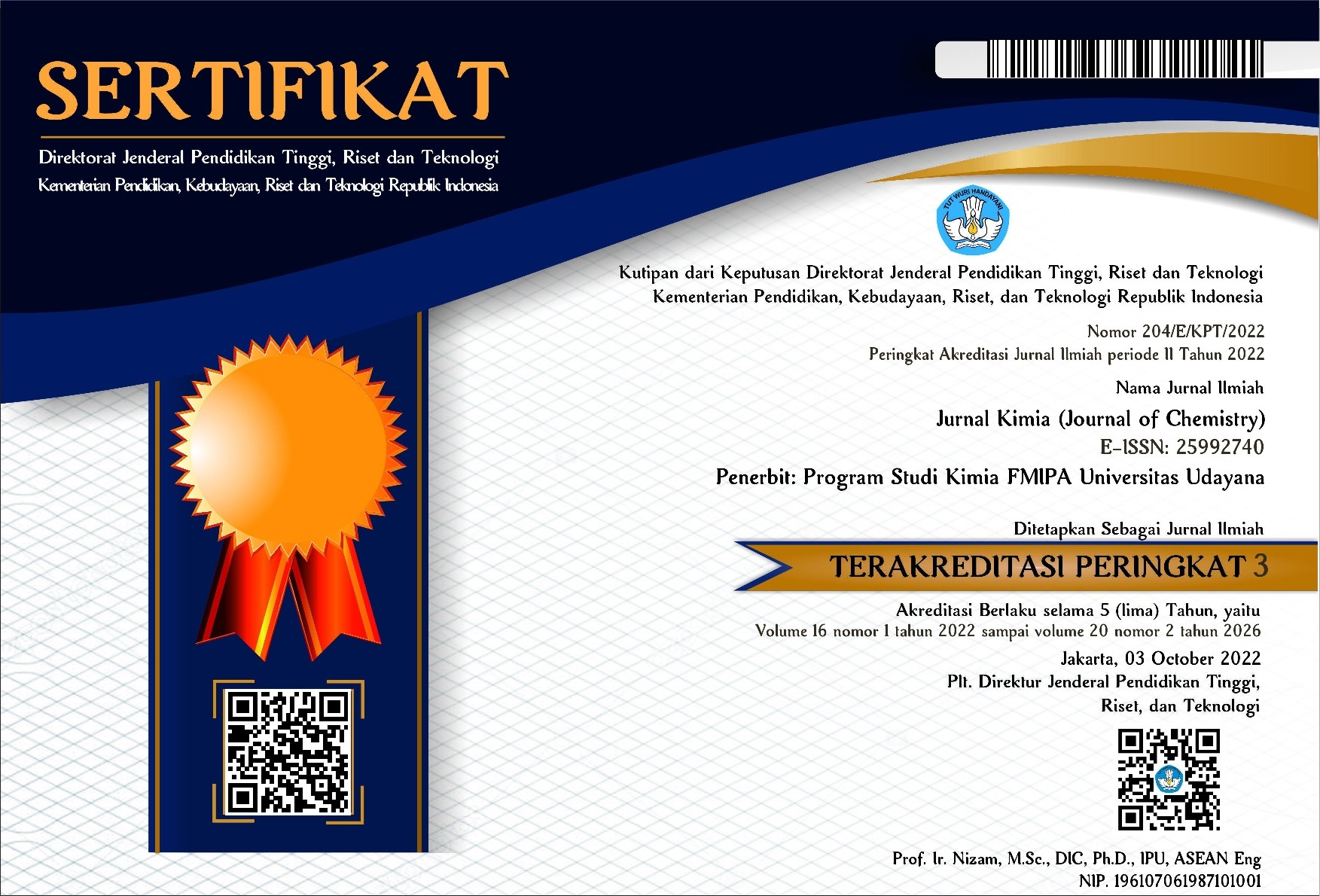EKSPLORASI EKSTRAK TUMBUHAN YANG MENUNJUKKAN AKTIVITAS ANTIJAMUR TERHADAP JAMUR CURVULARIA VERRUCULOSSA PENYEBAB PENYAKIT BERCAK DAUN PADA TANAMAN PADI (ORYZA SATIVA L.)
Abstract
Eksplorasi bahan baku fungisida nabati untuk mengendalikan jamur Curvularia verruculosa penyebab penyakit bercak daun pada tanaman padi telah dilakukan. Dari 55 species tumbuhan yang diteliti menghasilkan 73 ekstrak etanol dari berbagai komponen tumbuhan. Beberapa ekstrak tumbuhan mampu menghambat pertumbuhan jamur C. verruculosa dengan sangat kuat, diantaranya ekstrak kulit kayu dan daun Michelia champaca dengan diameter zona hambatan masing-masing sebesar 30,07dan 22,07 mm, ekstrak kulit buah, daging buah dan daun Pangium edule Reinw (29,12;27,17; dan 20,16 mm), ekstrak daun Tamarindus indica L. (26,10 mm), ekstrak daun Michelia alba (26,03 mm) dan ekstrak daun Allamanda cathartica (23,00 mm). Hasil uji fitokimia menunjukkan bahwa mayoritas ekstrak tumbuhan yang memiliki daya hambat yang sangat kuat terhadap jamur C. verruculosa mengandung senyawa metabolit sekunder jenis terpenoid.
Kata kunci: aktivitas antijamur, C. verruculossa, ekstrak tumbuhan, kandungan kimia ekstrak tumbuhan
Exploration of raw materials for vegetable fungicides in controlling the Curvularia verruculosa fungal causing leaf spot disease in rice has been carried out. Extraction of various plant components of 55 plant species studied resulted in 73 ethanol extracts. Several plant extracts were able to very strongly inhibit the growth of C. verruculosa fungal, namely the extracts of bark and leaves of Michelia champaca showed inhibition zone diameters of 30.07 and 22.07 mm, respectively; the extracts of the frut rind, pulp and leaves of Pangium edule Reinw showed inhibition zone diameters of 29.2; 27.17; and 20.16 mm, respectively; the leaves extract of Tamarindus indica L., Michelia alba and Allamanda cathartica showed inhibition zone diameters of 26.10 mm; 26.03 mm, and 23.00 mm, respectively. The phytochemical test results indicated that the majority of plant extracts showing very strong inhibitory activity against C. verruculosa contain secondary metabolites of the terpenoid.
Keywords: antifungal activity, chemical content of plant extracts, C. verruculossa, plant extracts
Downloads
References
Cohen, Y., Wang, W., Ben-Daniel, B.H., and Ben-Daniel, Y. 2006. Extracts of Inula viscosa Control Downy Mildew of Grapes Caused by Plasmopora viticola. The American Phytopathological Society. 96(4):417-424.
Hogan, D. A., Vik, A., and Kolter, R. 2004. A Pseudomonas aeruginosa quorum-sensing molecule influences Candida albicans morphology. Mol Microbiol, 54, 1212–1223.
Kuc, J. 1995. Phytoalexins, Stress Metabolism, and Disease Resistance in Plants. Annu. Rev. Phytopathol, 33:275-297.
Mamoci, E., Cavoski, I., Simeone, V., Mondelli, D., Al-Bitar, L., and Caboni, P. 2011. Chemical Composition and In Vitro Activity of Plant Extracts from Ferula communis and Dittrichia viscosa Against Postharvest Fungi. Molecule, 16. 2609-2625.
Nibret, E., Youns, M., Krauth-Siegel, R.L., and Wink, M. 2011. Biological Activities of Xanthatin from Xanthium stumarium Leaves. Phytother. Res. 25: 1883-1890
Picman, A.K. 1986. Biological Activities of Sesquiterpene Lactones. Biochem. Syst. Ecol., 14: 255-281.
Rodriguez, E., Towers, G.H.N., and Mitchell, J.C. 1976. Biological Activities of Sesquiterpene Lactones. Phytochemistry, 15:1573-1580.
Rout, S., and Tewari, S.N. 2012. Fungitoxic Spectrum of Amalaba Against Fungal Pathogens in Rice Under In Vitro. J. Biopest., 5:161-167.
Schmidt, T.J. 1999. Toxic Activities of Sesquiterpene Lactones : Structural and Biochemical Aspects. Curr. Org. Chem., 3:577-608.
Spring, O., Albert, K., Hager, A. 1982. Three Biologically Active Heliangolides from Helianthus annuus. Phytochemistry, 21(10):2551-2553).
Wang, L.H., He, Y., Gao, Y., Wu, J. E., Dong, Y.H., He, C., Wang, S. X., Weng, L.X., and Xu, J.L. 2004. A bacterial cell–cell communication signal with cross-kingdom structural analogues. Mol Microbiol 51, 903–912.
West, J.S., Bravo, C., Oberit, R., Lemaire, D., Moshou, D., McCartney, H.A. 2003. The Potential of Optical Canopy Measurement for Targeted Control of Field Crop Diseases. Annual Review of Phytopathology, 41:593–614.
Yang, D., Michel, L., Chaumont, J.P and Millet-Clerc, J. 1999. Use of caryophyllene oxide as an antifungal agent in an in vitro experimental model of onychomycosis. Mycopathologia, 148: 79–82,
Yoon, M.Y., Cha, B., Kim, Jin-Cheol. 2013. Recent Trends in Studies on Botanical Fungicides in Agriculture, Plant Pathol J., 29:1–9.
Zhang, Y.Q., Cai, C., Yang, Y.X., and Weng, L. 2011. Blocking of Candida albicans biofilm formation by cis-2-dodecenoic acid and trans-2-dodecenoic acid. Journal of Medical Microbiology, 60, 1643–1650

This work is licensed under a Creative Commons Attribution 4.0 International License






